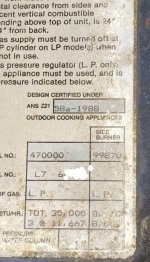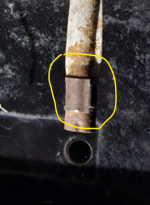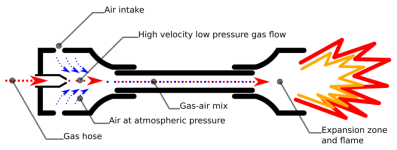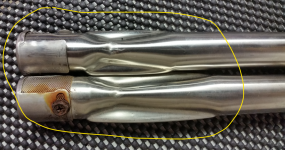thanks. i will check the alignment of the orifice to the burner tube. i have cleaned out the burner tube the best i can. it has a sharp 90 degree bend at the burner head and no tool that i have, or improvised piece of wire, can make that bend and still be effective looking for obstructions.
if my very foggy memory is correct (from 25 years ago) i very likely bought this side burner set up for NG. the #58 hole in the orifice corresponds to 6300 BTU for NG. it is not impossible that the diameter of the burner tube and the design of the venturi won't allow for twice the airflow, which would be required for the #58 hole and LP. that's why i will drill a new orifice for about 7000BTU and see what the result is.
the venturi section on this tube is not as narrow as that on the main burner tubes, which would result in less-effective venturi effect but would have been sufficient for the BTU rating that the burner was designed for.
i'll update when i have the new orfices and have drilled one to my satisfaction.




